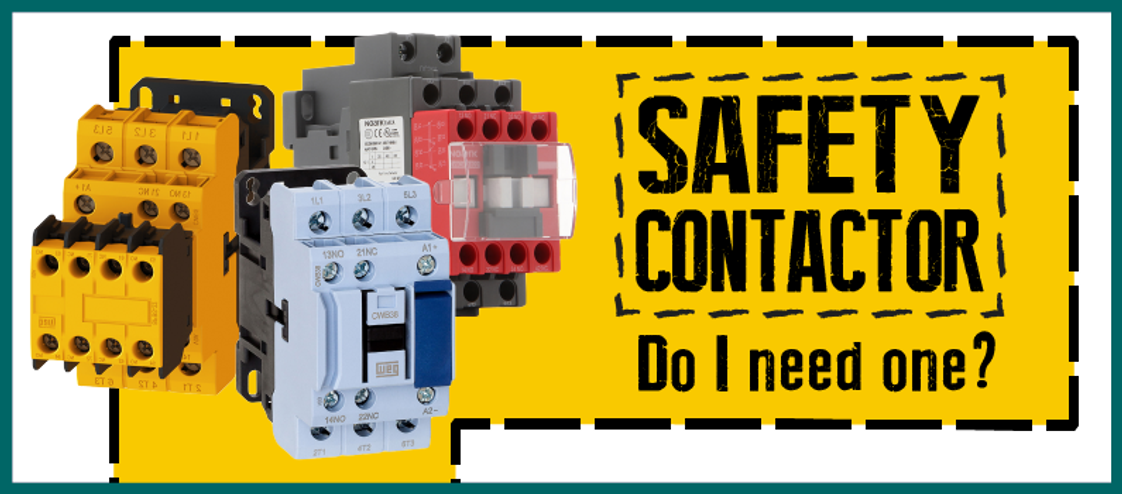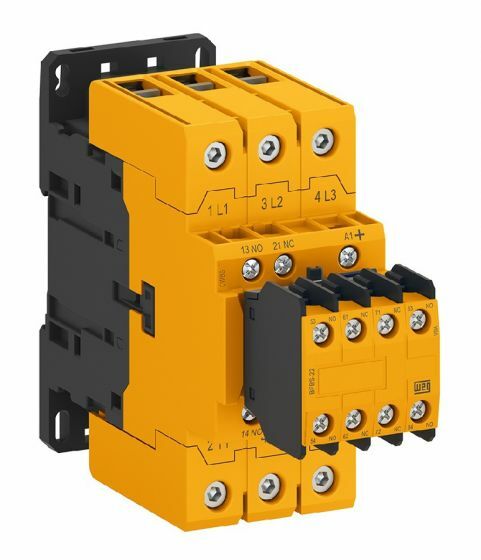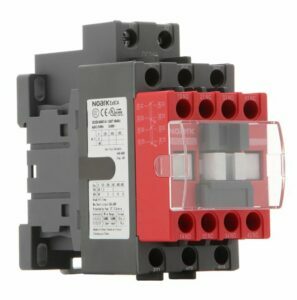
Do I Need a Safety Contactor
Posted by Beckie Sullivan on Feb 27th 2023
Before we dive into safety contactors, let’s first cover what a regular contactor is used for. Contactors switch an electrical circuit on or off. The most common use is as a simple on/off switch for a motor or lighting application.
A safety contactor has the same functionality and purpose as a standard contactor except that the contacts are mechanically linked together so all three poles will close together and fail in an open state.
This means that if a safety contactor fails, the control voltage will be applied but the contacts will not close.
If your machine is on when the safety circuit is on, a safety contactor is probably your best option. If you change the state of your device before or after the safety circuit is energized, then a standard contactor might be all you need.
Our Safety Contactors
Weg’s CWBS series of safety contactors have mechanically linked contacts (IEC/EN 60947-5-1) and mirror contacts (IEC/EN 60947-4-4) that allow for safe operation of machinery and equipment. This series is available from 9 to 80 amp in AC-3. Built-in safety contacts are easily identified and separated from the power contacts.
The Noark Ex9CA safety contactor series is available up to 38 amps. It also has positively guided mirror and mechanically linked contacts according to IEC/UL60947-4-1 and IEC/UL60947-5-1.
What is a mirrored contact?

A mirrored contact is a normally closed (NC) auxiliary contact which cannot be closed simultaneously with a normally open (NO) main contact.
According to IEC/EN 60947-5-1-Annex L, open contacts and closed contacts cannot be simultaneously closed. If welding occurs on either the NO or NC contacts, the opposite contact must remain open.
Different colors make it easy to identify these safety components and reduces the chance of misusing the safety system. Weg’s safety contactors are a gold/yellow while Noark has a red front cover that is marked with a mechanically linked contact symbol.
Both of our safety contactor series offer AC and DC coil options.
Safety contactors are often used in self-monitoring circuits combined with safety interfaces such as safety relays.
One Last Thing
There is another difference between a standard contactor and a regular contactor. A standard contactor can usually be operated from the front, a safety contactor does not allow for manual operation from the front of the contactor. This removes the possibility of someone creating an unsafe state if there is an unexpected start-up.
If you need additional assistance deciding which contactor would be best for your application, we’re here to help! Please contact us and choose ‘Tech Support’ from the drop down menu.
Common Applications for Safety Contactors


